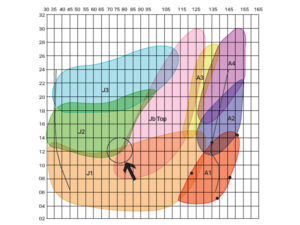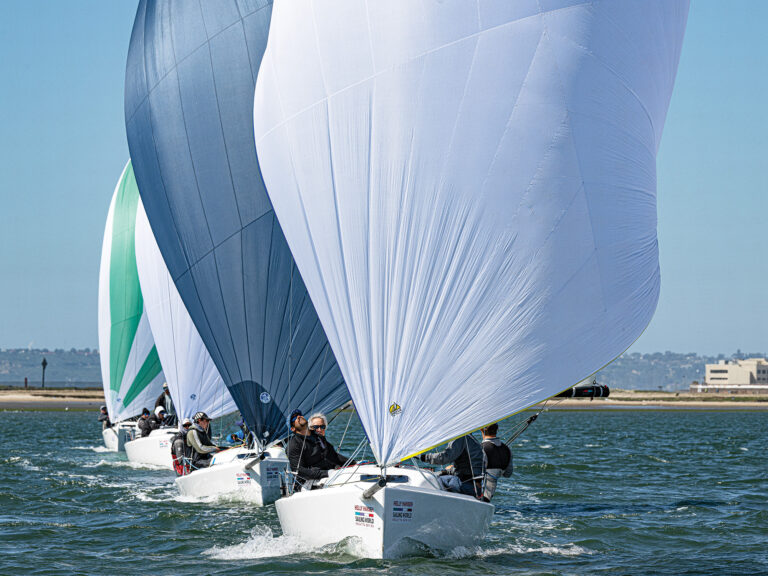1. If your pole is at or near its “J” length (see p. 72), jibe outside. The longer the pole, the better an inside jibe may work.2. If windspeed is lower than boatspeed, and the pole is significantly longer than “J” (as on the Farr 395), an inside jibe will prevent running over the sail.3. On boats with conventional poles equal to their “J” measurement, jibe outside using a downhaul at the asymmetric tack. The downhaul must be pulled down rapidly as the pole is taken off and placed on the other side while the tack is pulled to the deck.4. The lower the asymmetric tack, the less distance the sail has to fly around the luff.5. On outside jibes, pull the luff straight to minimize the clew-travel distance.6. On boats that jibe the pole, make sure the sail has a device to carry the new guy — or you’ll sail over the guy with disastrous results.7. On the inside jibe, ease the sheet carefully, keeping the clew ahead of the headstay and behind the luff tape. On an outside jibe, ease the sheet rapidly. Have the sheet pulled free by an extra body, which makes for a quicker jibe.8. Have the crew gang up on the sheets to sweep the sail around.¿Andreas Josenhans









